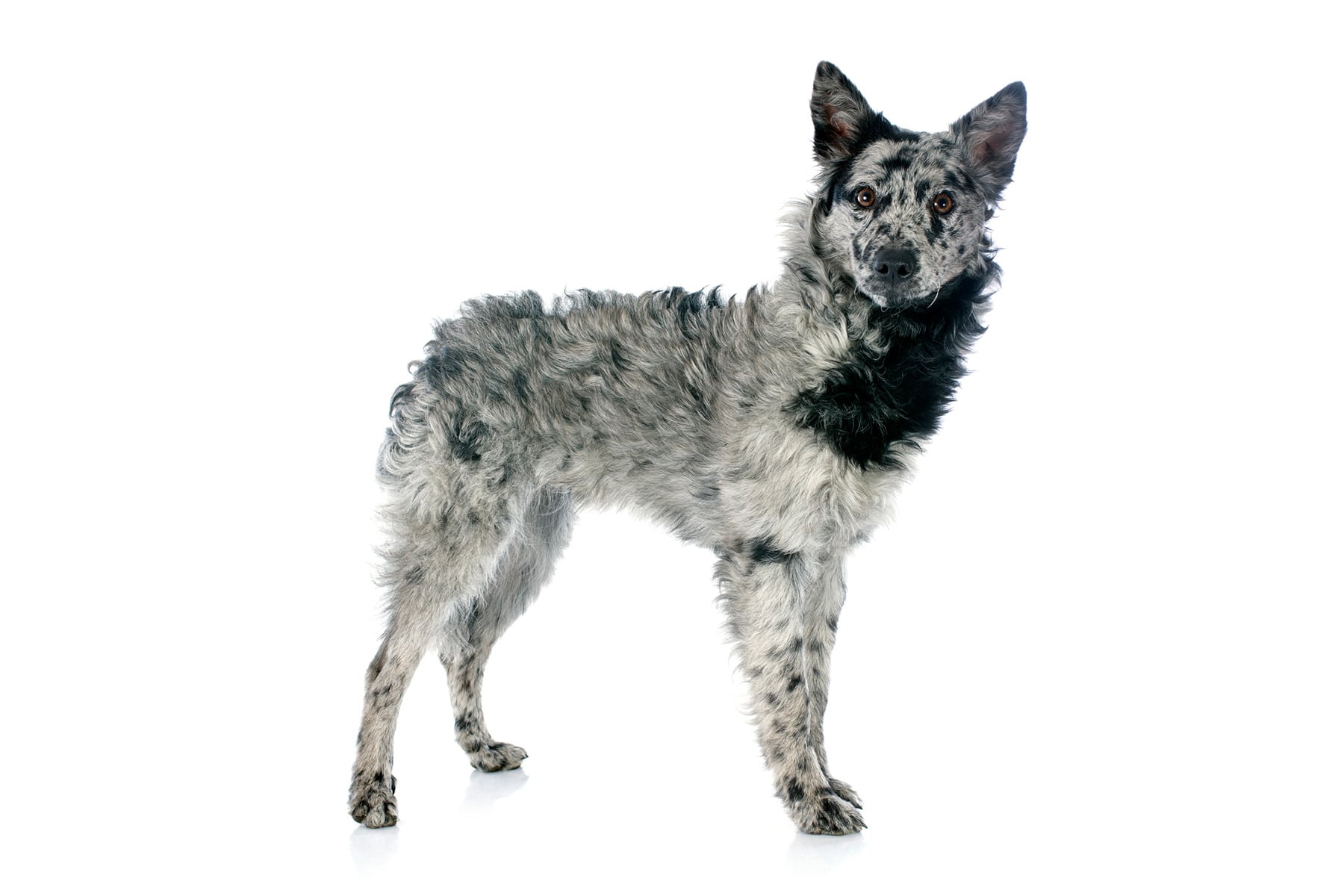English Setter

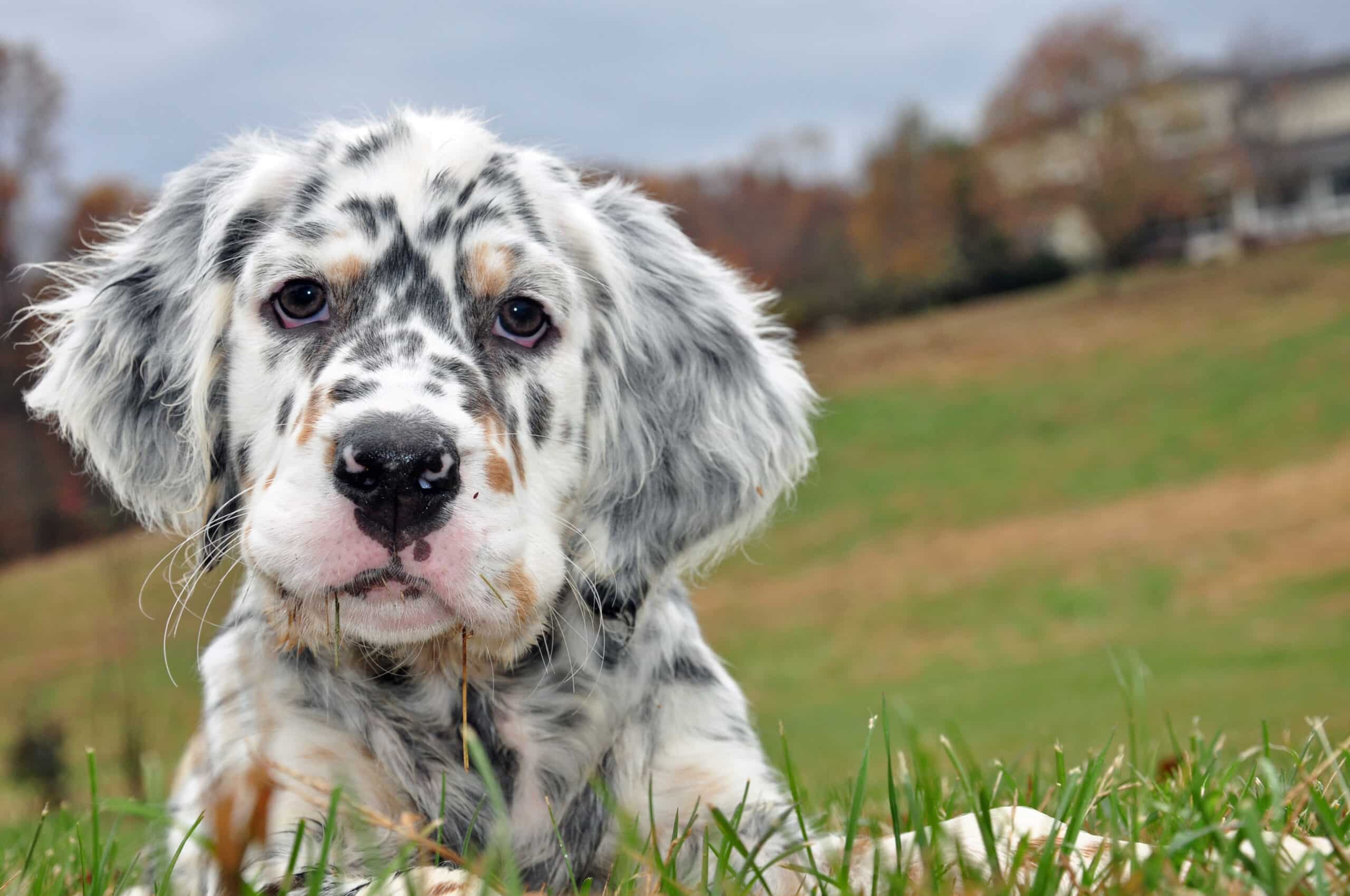
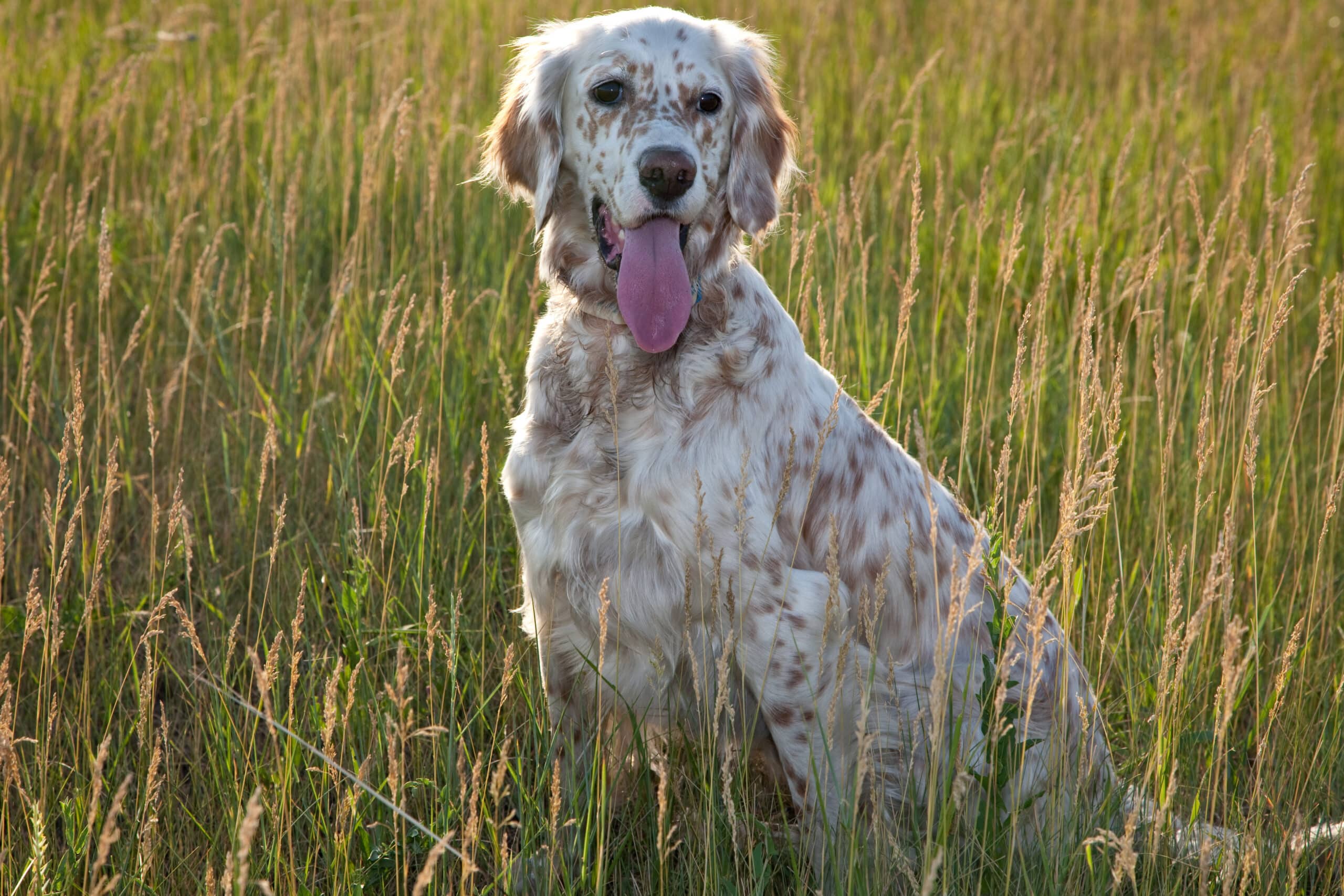
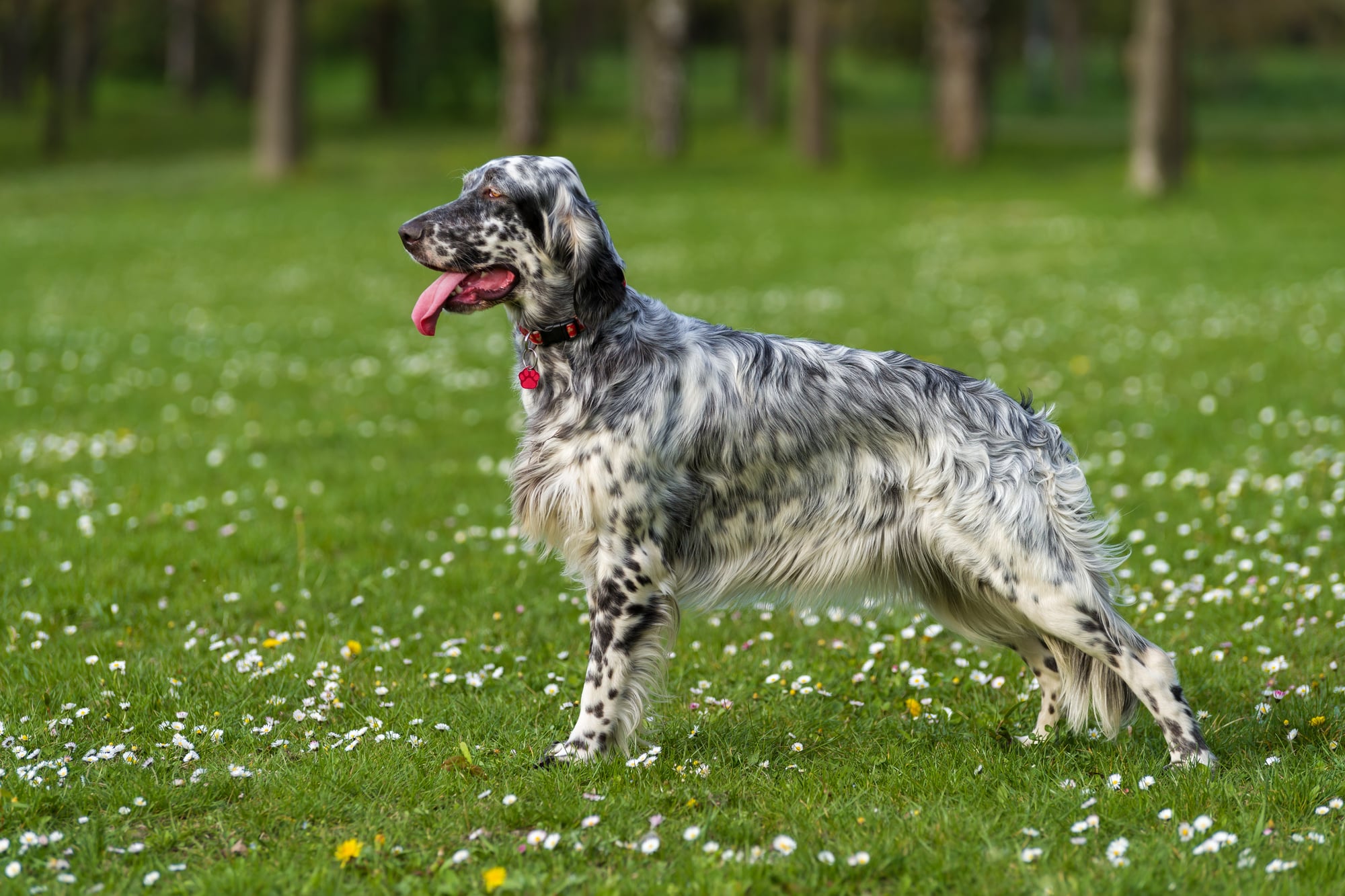
Temperament:
The English Setter originally comes from England. It is an affectionate hunting dog. The animals need a lot of exercise and social interaction. The English Setter is not suitable as a guard dog. It is very sensitive and sometimes a little headstrong. A sensitive hand is therefore recommended when training this four-legged friend. The English Setter gets along very well with small children. It is therefore an excellent family dog. He loves to romp around with the whole family or with the whole pack.
Characteristics
The English Setter is a medium-sized dog. Males are between 65 and 68 cm tall. Females are between 61 and 65 cm tall. The English Setter can weigh up to 36 kg. The life expectancy of this dog is around 12 years.
The coat of the English Setter is long and soft with slight waves. The basic color is white. There are yellow, blue or brown patches on it. Some specimens can also have three colors in their coat. For example, these English Setters are white with blue and brown patches.
The dogs have a luxuriant coat all over their body. The ears and tail are also heavily furred.
The four-legged friends have large eyes with an attentive gaze. The eye color is usually brown. The English Setter has medium-length, drooping floppy ears. The dogs are elegant and beautiful. The physique of the English Setter is slender and dynamic. The dogs are very athletic and have a great urge to move.
The hanging ears of the English Setter flutter in the air as they romp and frolic. The English Setter inspires with its cheerfulness and zest for life.
Otherwise, this dog is calm and affectionate. This makes it particularly suitable as a family dog. They get on well with both young and older children. English Setters are usually like children themselves and love to jump around and romp with the little ones.
English Setters are very emotional and sensitive. They enjoy receiving and giving love.
They are very loyal and attentive. They protect their pack or family. They show you when danger is imminent. But you can also quickly calm them down again.
The English Setter is a very sociable dog. They love the company of people and other dogs. So there is always something going on with an English Setter. They are happy to have visitors and welcome them warmly. These dogs also enjoy making friends with other four-legged friends.
The animals like to run and jump over hill and dale. They are difficult to keep under control, especially as puppies. As they get older, however, they become calmer and calmer.
English Setters are very friendly and lovable. Nevertheless, they are dogs with a pronounced hunting instinct. Don't be fooled by their harmless appearance. If he spots a rabbit or a cat, he can very quickly become a fierce hunter. Always remember this when you are out and about with your dog.
Coat care:
Shedding:
Energy level:
Trainability:
Children suitable:
The right food
When choosing food, make sure that it contains high-quality ingredients, is balanced and meets your dog's requirements. Age, size or weight, activity and health status play an important role. You should follow the manufacturer's recommendations for the amount of food.
Treats should only be fed in moderation and deducted from the basic diet to avoid obesity.
Puppies can be fed 4-6 times a day. The number of meals should be gradually reduced to 2 per day until the dog is fully grown. A rest period should be observed after meals to avoid stomach torsion.
Health & Care
English Setters are very robust dogs. Nevertheless, you should devote a lot of time to their care.
Make sure that you are dealing with a reputable breeder at the time of purchase. Make sure that the breeding dogs are examined. For example, you can minimize the risk of your dog suffering from hip dysplasia, elbow dysplasia or deafness. English Setters are somewhat more susceptible to these diseases.
Neutered English Setters and animals with little exercise can become overweight. This can lead to joint pain in your four-legged friend.
Your English Setter's beautiful, long coat needs to be brushed daily. This shouldn't take more than a few minutes. This way you can prevent the hair from matting.
Leaves and small twigs often get caught in the long fur of these dogs. You should therefore clean the coat after a walk and check it thoroughly for parasites and ticks.
You do not need to bathe your four-legged friend, or only very rarely. If you do, use a very mild dog shampoo. It is usually enough to let the dirt dry. It can then be easily brushed out of the coat.
Look under the floppy ears regularly. Sometimes dirt collects there. Clean the ears carefully. Regular dental care prevents tartar. The claws normally wear off by themselves. If not, they need to be trimmed regularly.
English Setters are intelligent, affectionate and docile animals. They are therefore easy to train. However, these dogs can sometimes be a little stubborn and headstrong. It is then up to you to set clear rules and be consistent.
The prerequisite for successful training is that all family members adhere to it. It is an advantage if you already have experience in training four-legged friends.
Your English Setter is also easier to train if you give him freedom of movement and challenge him in a sporting way. This way, he doesn't have to resist you in order to go hunting on his own. You can find out from dog schools whether there are special programs or offers for hunting dogs and you should not use the English Setter as a guard dog or lock it in a kennel. He is a sensitive and sociable animal. He needs a lot of contact with you and other dogs.
Suitable accessories
No special aids are required to care for the English Setter. However, a certain amount of basic equipment is necessary for every dog.
This includes high-quality food, a lead, collar or harness, dog blanket, food and water bowl, transport box, brush and comb, tick tweezers and claw clippers.
Additional toys are recommended for the English Setter. Especially balls or other things that he can fetch. English Setters love to fetch. So you should have no problem keeping your four-legged friend busy. If you are too tired, you can simply throw the ball again and again and let him retrieve it.
This will ensure you get enough exercise.
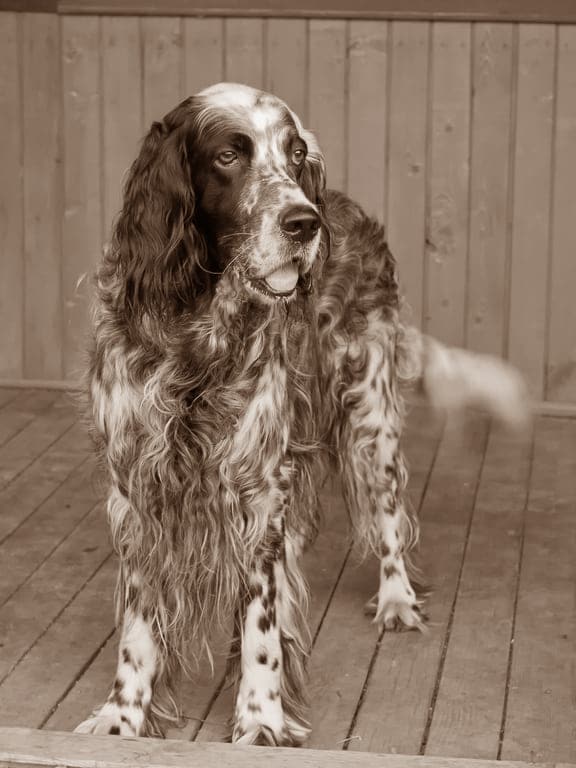
Origin & History
The English Setter is descended from the long-haired bird dog. The Old Spanish Pointer is also one of the ancestors of the English Setter. Before the animals were given the name English Setter, they were referred to as Setting Spaniels.
The origins of the English Setter date back to the Middle Ages. This makes them one of the oldest hunting dogs. As early as the 14th century, they were used for hunting small game and birds. Greyhounds were not suitable for this. They would only have frightened the poultry.
English Setters were better suited because of their good nose. This enabled them to carefully track down partridges hiding in the undergrowth. To catch the birds, the hunter threw a net over them and the hunting dog. The English Setter lay flat on his belly, as he had learned to do. This allowed the net to hit and catch the bird safely.
In the 19th century, Sir Edward Laverack bred English Setters in England. Over several generations, he selected only the noblest, most beautiful and most intelligent animals. This is how the English Setter became a breed in its own right.
Sir Edward Laverack introduced the first purebred English Setter puppies in 1860. He won countless prizes with his breed and was able to sell his four-legged friends for large sums of money. The English Setter soon enjoyed great popularity outside England too.
The breed was finally recognized by the FCI in 1963.



